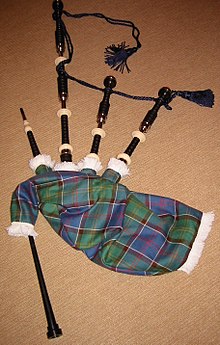User:Rafamatalon1234/sandbox

I will substitute this under "Traditional Music"
Traditional and Folk Music[edit]
Traditional and Folk music are very similar terms. Although the term "traditional music" is very broad and can approach several different genres, it is widely described that traditional music encompass folk music.[1] According to the ICTM (International Council for Traditional Music), traditional music are songs and tunes which have been performed over a long period of time (usually several generations). [2]
The Folk music genre is classified as the music that is orally passed from one generation to another. Usually the artist is unknown, and there are several different versions of the same song.[3] The genre is transmitted by singing, listening and dancing to popular songs. This type of communication allows culture to transmit the styles (pitches and cadences) as well as the context it was developed.[4] Some of the main aspects about culturally transmitting folk songs, its about the period of history it was created and the social class in which was developed.[5] Some examples of the Folk Genre can be seen in the Folk music of England and Turkish Folk music. English folk music was developed since the medieval period and it has transmitted from that time until today. Similarly, the Turkish Folk music relates to all the civilizations that once passed thorough Turkey, therefore being a world-reference since the tensions between East-West during the Early Modern Period.
Traditional Folk music usually refers to songs composed in the 20th century, which tends to be written as universal truths and big issues of the time it was composed.[6] Great names such as Bob Dylan, Peter Paul and Mary, James Taylor, and Leonard Cohen transformed the Folk music on what it is known today. Some newer composers, such as Ed Sheeran (Pop Folk), and The Lumineers (American Folk) are both newer examples of Contemporary Folk music, which has been recorded and adapted to the new way of listening to music (online) on the contrary of the traditional way of orally transmitting music.[7]


Each country in the world, in some cases each region, district and community has its its own Folk Music style. The different sub-divisions of Folk genre is developed by each place cultural identity and history.[8] Because the music is developed in different places, a lot of the instruments are characteristic to its location and population, but some of them are similar everywhere, some examples are: Button or Piano Accordion, different types of flutes or trumpets, Banjo, and Ukulele. Both French and Scottish folk music uses related instruments such as the Fiddle, the harp and variations of bagpipes.[9][10]
 | This is a user sandbox of Rafamatalon1234. You can use it for testing or practicing edits. This is not the sandbox where you should draft your assigned article for a dashboard.wikiedu.org course. To find the right sandbox for your assignment, visit your Dashboard course page and follow the Sandbox Draft link for your assigned article in the My Articles section. |
- ^ "What is Traditional Music? - a broad definition". www.traditionalmusic.org. Retrieved 2019-03-29.
- ^ "Home | International Council for Traditional Music". ictmusic.org. Retrieved 2019-03-29.
- ^ "EarMaster - Music Theory & Ear Training on PC, Mac and iPad". www.earmaster.com. Retrieved 2019-03-29.
- ^ Albrecht, Joshua; Shanahan, Daniel (2019-02-01). "Examining the Effect of Oral Transmission on Folksongs". Music Perception: An Interdisciplinary Journal. 36 (3): 273–288. doi:10.1525/mp.2019.36.3.273. ISSN 0730-7829.
- ^ "Folk music". Encyclopedia Britannica. Retrieved 2019-03-29.
- ^ "Traditional Folk Music Songs". AllMusic. Retrieved 2019-03-29.
- ^ "Is folk music dying out? | Naz & Ella | Indie-Folk Duo | London". Naz & Ella | Indie-Folk Duo | London. Retrieved 2019-04-02.
- ^ "THE GENERAL CHARACTER OF EUROPEAN FOLK MUSIC". www.cabrillo.edu. Retrieved 2019-04-01.
- ^ "what instruments are used in typical french folk music | Folk Music | Performing Arts". Scribd. Retrieved 2019-04-04.
- ^ "Traditional Scottish Music". English Club TV On-the-Go. 2015-10-29. Retrieved 2019-04-04.
